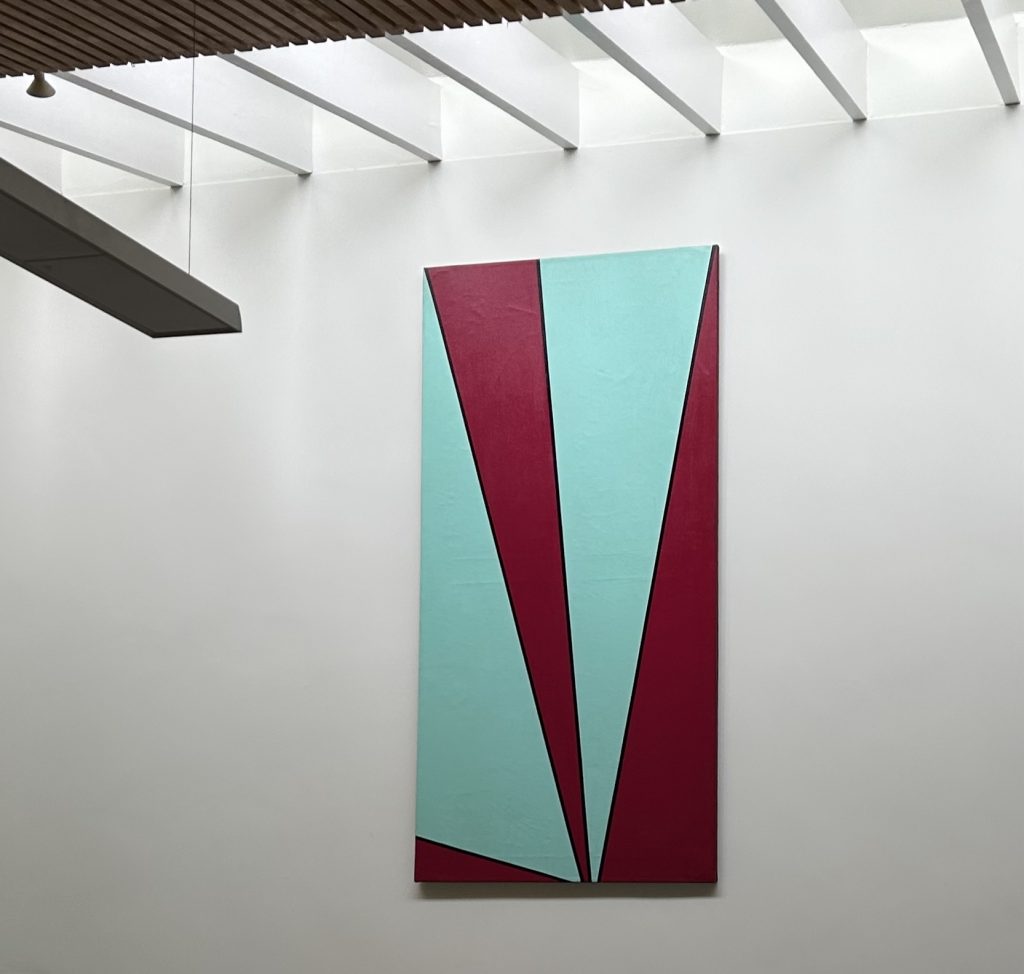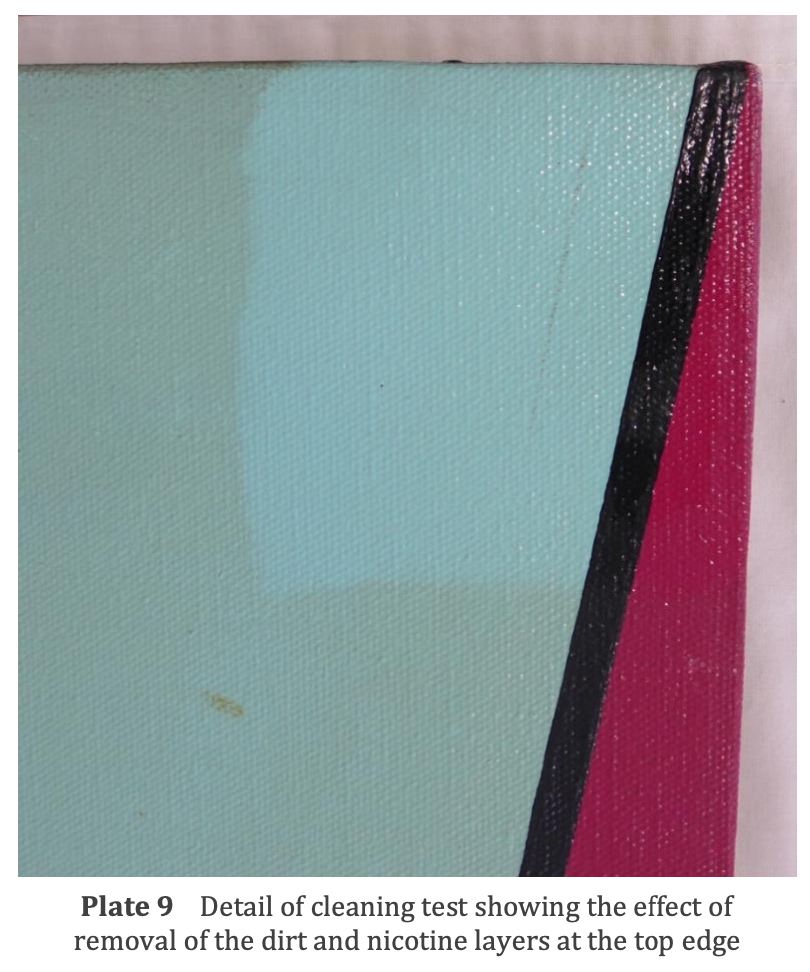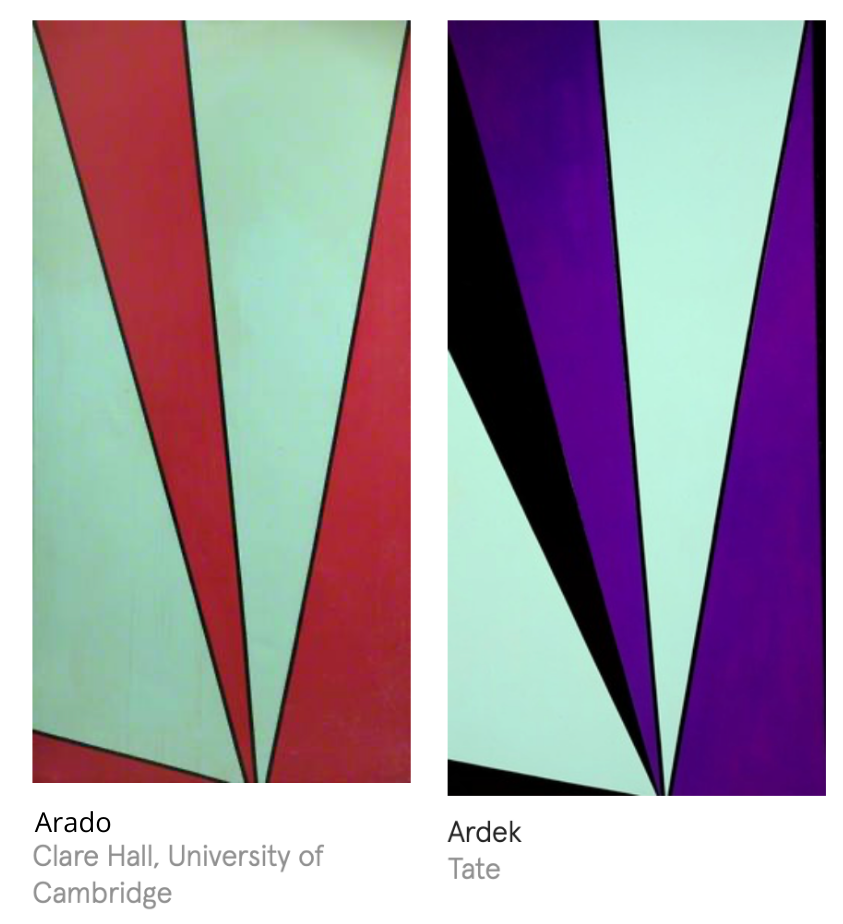News in the Arts: Clare Hall discovers a further link with Sweden
A picture by the internationally renowned Swedish artist Olle Bærtling has recently been rediscovered in the college Art Collection and is now on display in the Meeting Room. Gifted to Clare Hall through the Stockholm office of Ralph Erskine in 1971, shortly after life at the college in buildings designed by Erskine had begun, the Bærtling adds another fascinating layer to Clare Hall’s Scandinavian links.
Written by Frances Spalding (Emeritus Fellow and Art Committee Chair) and Andreas Mørkved Hellenes (Research Fellow).

One of the intentions behind the making of the college Art Collection was that it should act as a loan collection for residents and staff, living or working on site. This was the cause of a recent discovery which has added to the college history.
When Andreas Mørkved Hellenes, a Swedish-Norwegian Research Fellow, arrived at Clare Hall with his wife and daughter, he wanted to enhance their college flat by borrowing pictures from the Clare Hall Art Collection. Following instructions from the porters, he studied the collection’s catalogue in the Common Room, and filled in the form, listing things he wanted to see. Normally the Secretary of the Art Committee steps in at this stage, partly to check on the condition of the work, but instead Frances was asked to accompany Andreas to the store.
Andreas had already noticed in the catalogue that Clare Hall owned a work by Olle Bærtling (1911–1981), a well-known Swedish artist. It proved to be a large painting, at the back of the store, almost completely obscured by other pictures. We took it out on the landing to look at it in better light, and after a while we noticed that a grubby yellow stain had damaged part of the canvas.

Once seen, a stain cannot be ignored. Polly Saltmarsh, a professional Conservator, came to the fore and removed not only the stain and surface dirt but also scratches and indentations in the canvas. It now looks superb and currently hangs in the Meeting Room where all can see it. But even before it was returned to its pristine state, Clare Hall’s Bærtling startled one of Andreas’s Swedish colleagues, who quickly recognized it in the background during the course of a Zoom call. ‘How come,’ he asked Andreas, ‘you have a Bærtling on the wall of your flat?’ The answer to that question is that Bærtling gave it to Clare Hall in 1971. It was sent from Ralph Erskine’s architectural practice in Stockholm, and received by Göran Printz-Påhlson, a Swedish fellow of Clare Hall, and important translator and poet in his own right. Clare Hall’s picture, titled Arado, arrived in this country a few years after the only other Bærtling in British public collections – Tate Modern’s picture Ardek.

Both these mid-1960s works are characteristic example of his style, exploring what he referred to as “open form”, where hard-edge, colourful triangular units meet and seem to extend into space beyond the frame of the canvas. His interest in spatial compositions also brought Bærtling into collaborations with architects, notably David Helldén; the duo worked together on important urban projects such as the decoration of the first high rise building in Stockholm and afterwards on a similar project for the new Stockholm University. Bærtling is today considered one of Scandinavia’s seminal postwar artists, with a truly unique style, and his œuvre is represented in many of the world’s major collections including the Centre Pompidou, the Stedelijk in Amsterdam, and MoMA.
The story of Clare Hall’s Bærtling is a reminder of the college’s history as a meeting place for international modernist currents in art and architecture, science and literature, specifically illustrating its position as a British-Swedish site of 20th century cultural memory.